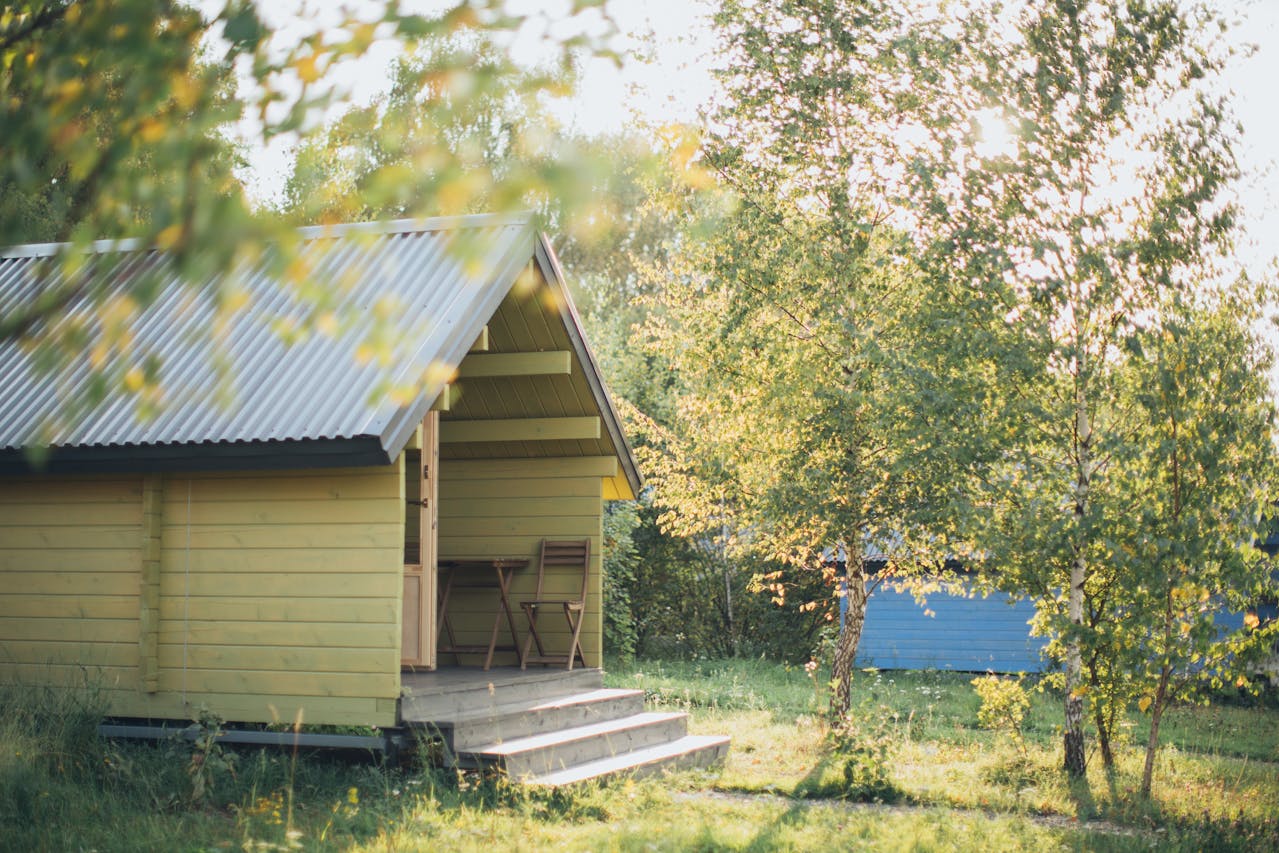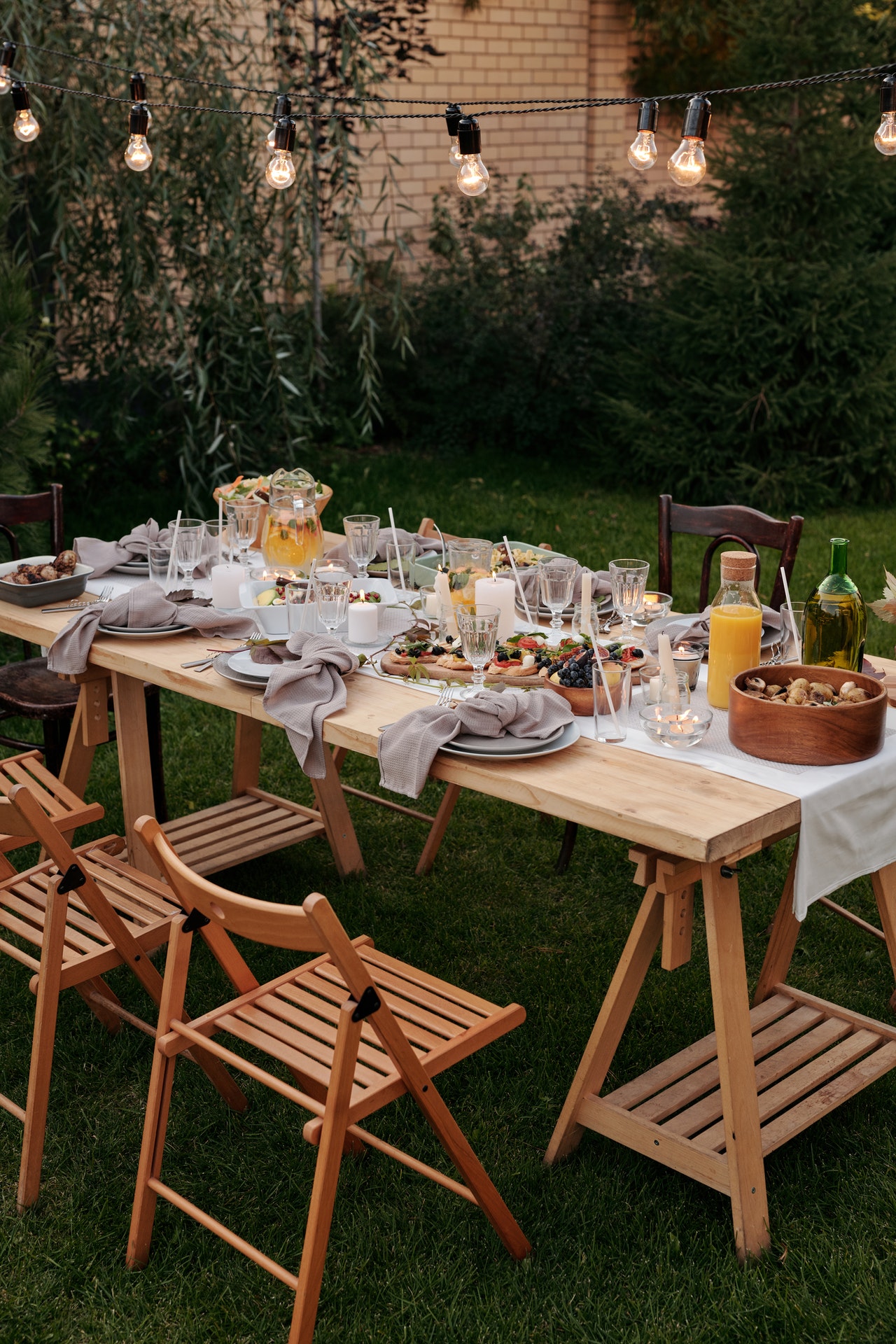Walk through almost any British garden and you’ll spot a good shed. Some are practical, some decorative and relaxing, and some almost invisible behind ivy and roses.

Photo by Elina Sazonova: https://www.pexels.com/photo/wooden-shed-beside-trees-3099659/
Yet the humble shed does more than store tools. It shapes the way we use gardens, determines how much clutter creeps into the house, and, in larger forms, can even change the purpose of a property.
Shed as a Silent Organiser
Think of everything a typical household accumulates: bicycles, lawnmowers, plant pots, folding chairs, and boxes of decorations that only see daylight once a year. Without a shed, these items end up in garages where cars no longer fit, or in lofts where access is awkward.
A good shed acts as a pressure valve. It gives those objects a home, freeing indoor space for everyday living. The simple act of transferring clutter outdoors immediately changes the feel of a house.
Rooms stay clearer, hallways less crowded, and garages remain functional for their original purpose.
Different Sheds for Different Lives
Not all sheds are created equal. Each type solves a particular problem, and knowing the options helps match the right structure to the right lifestyle.
- Tool sheds: Small, narrow, and built for efficiency. They hold spades, trowels, watering cans—items used weekly but too bulky to keep indoors.
- Bike sheds: Low in height but secure, protecting bicycles from rust and theft. Popular in towns where cycling is part of the commute.
- Potting sheds: Half storage, half greenhouse. With windows for light and shelves for seedlings, they’re perfect for gardeners who want a workspace sheltered from rain.
- Rural sheds: The giants of the group. In rural settings, they house tractors, feed, or heavy equipment. In suburban gardens, scaled-down versions provide space for large DIY projects or even small business storage.
- Summerhouses: More than storage, these are designed for leisure—reading, hobbies, or enjoying the garden from inside.
Each shed type extends the boundaries of the house in a different direction: towards work, leisure, or heavy-duty practicality.
Aesthetics Matter Too
For years, sheds were purely functional. They stood at the back of the garden, painted dark green or left to weather naturally. That has changed. Today’s sheds contribute to outdoor space design as much as flower beds or patios.
A painted shed in muted grey or sage green becomes a backdrop for planting. A barn-style timber shed with bold doors adds character. Even a metal structure, carefully placed, can complement modern landscaping. Instead of hiding them, many homeowners now treat sheds as focal points.
This design shift transforms sheds from storage solutions into features that complete the garden.
Beyond Storage: New Roles Emerging
A shed can be many things beyond a cupboard with a roof. Across the UK, sheds are quietly being repurposed into:
- Workshops for DIY projects.
- Studios for painting, music, or writing.
- Garden offices, increasingly popular as home working becomes permanent.
- Family hubs where sports gear and children’s toys are centralised.
Rural sheds in particular highlight this flexibility. While still crucial in agriculture, many homeowners with large plots adopt smaller versions for hobbies that require space: woodworking, motorbike restoration, or even small-scale brewing. The farm shed becomes a symbol of capability—large enough to hold serious projects, yet still connected to the garden.
Practical Realities Nobody Should Ignore
Romantic ideas about garden retreats only work if the shed itself is built well. A few practical points make the difference between a shed that lasts decades and one that collapses after a storm.
- Foundations: Even the smallest shed needs a solid base to avoid sinking into the ground. Concrete or paving slabs prevent rot and keep the floor level.
- Ventilation: Without airflow, condensation builds, especially in the UK’s damp climate. Vents or windows stop mould from taking hold.
- Security: A flimsy lock invites trouble. Reinforced doors, padlocks, and motion lighting are worth the effort if expensive items are stored.
- Maintenance: Wooden sheds require treatment every couple of years. Metal sheds resist rot but may need rust prevention. Plastic sheds demand little care but can discolour over time.
These practicalities may not feel glamorous, but they preserve the shed’s usefulness and prevent it becoming another chore.
The Cultural Place of the Shed
The shed has long held a special spot in British culture. It is often imagined as a retreat: a place for tinkering, escaping, or simply drinking tea while listening to the rain on the roof. Books and TV shows have celebrated the shed as a symbol of independence and quiet invention.
This cultural resonance explains why people invest more time and money into sheds than outsiders might expect. They are not just storage boxes—they are personal spaces layered with meaning.
How a Shed Transforms a Garden
Imagine two gardens of equal size. One has no shed. Tools lean against a wall, bikes sit under a tarp, and the patio is cluttered with chairs stacked for winter. The other has a well-placed shed. The garden feels calmer, the lawn is clear, and the patio is free to use.
The difference is immediate. A shed doesn’t just store items—it reorganises the entire outdoor environment. It signals that the garden is cared for and functional, not just an afterthought.
Looking Ahead: The Shed as Flexible Architecture
As gardens become more central to UK homes—partly driven by remote work and a desire for outdoor living—sheds are likely to take on even bigger roles. Small plots benefit from slimline sheds that hide storage discreetly, while larger properties may invest in farm-style structures that support both lifestyle and work.
The shed is moving closer to the idea of flexible architecture: simple, modular, adaptable buildings that respond to changing needs. Instead of being temporary, they are becoming permanent parts of how homes function.
Final Thoughts
A good shed transforms more than storage. It reshapes the balance between house and garden, clears space indoors, and can even act as a retreat, office, or workshop. Tool sheds, bike sheds, potting sheds, summerhouses, and large farm sheds all serve different roles, but the underlying principle is the same: order creates freedom.
By removing clutter and adding structure, a shed doesn’t just stand at the back of the garden—it actively changes how the whole property feels and functions. For UK homeowners, few investments deliver as much impact with such straightforward purpose.

